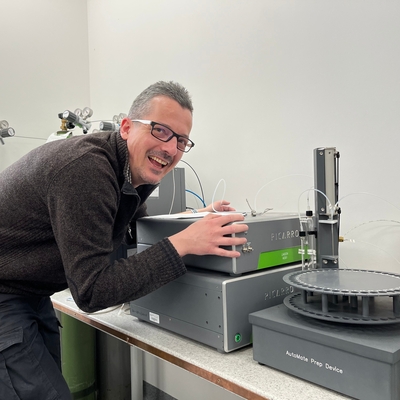
Maciej Górka
Organization: University of Wrocław
Years Using Picarro: 7 Years
Analyzer(s) Used: G2201-i
Researching Urban Environment GHGs, Their Biogenic and Anthropogenic Sources, and Seasonal Cycles
About My Research
Currently, I focus on several main directions of research: (i) research on GHGs in the urban environment, but also processes related to their absorption, influence of biogenic and anthropogenic sources and their seasonal cycle (short-scale like a day or long-scale like a year); (ii) geochemical studies of hard coals in terms of thermal transformations, such as analyzes of post-mining heaps and interactions of self-heating heaps with atmospheric GHGs; (iii) analyzes of the isotopic composition of carbon from atmospheric dust (PMx) to identify seasonal variability, shares of individual sources, etc. The result of this work is several outstanding works published in collaboration with various authors, including in Urban Climate, International Journal of Coal Geology, Atmosphere, Energies and others - many of which have been well received by the scientific community and I believe have had and will have a positive impact on science.
How Picarro Analyzers Helped
Currently, it is easier for me to analyze samples in terms of carbon isotope composition using CRDS than in the IRMS method - and analyzing air samples for concentrations and δ13C from methane and carbon dioxide, whether online or from offline bags, is much simpler and it is possible to quickly explore many samples. This allows, after the initial field survey, to select prospective areas (influenced by specific biogenic or anthropogenic GHG sources) which will be subjected to detailed and repeated analyzes of the atmospheric air. Similarly, using the CM-CRDS analyzer is extremely simple and less expensive than δ13C analyses on EA with IRMS. This allows for the analysis of a larger population of geological (e.g. coal) or environmental (PMx dust on Q filters) samples and finally the wider statistical look at the environmental problem.
